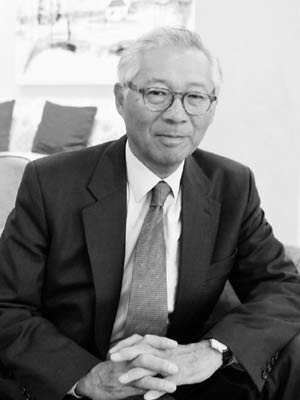 |
|
George Yip, a professor of strategy at the China Europe International Business School, and co-director of the CEIBS Centre on China Innovation, says Chinese companies are driven to innovation because of competition in the domestic market and consumer demand. CECILY LIU/CHINA DAILY |
Yip, who is also co-director of the CEIBS Centre on China Innovation, says Chinese companies are driven to innovation partly because of fierce competition in the domestic market and consumer demand.
"Everything is trending upward in terms of Chinese science publications, technology intensity and foreign R&D centers," Yip says. "China is not at the stage of Western innovation like Germany and Japan, but it is rapidly catching up."
Yip says that at the root of Chinese innovation are many factors.
First, the market is growing fast; second, it is competitive; third, the Chinese have different tastes so a lot of Western innovation no longer applies; and fourth, the market is diverse.
On the supply side, China has a lot of talent and low-cost R&D resources. The cost of hiring an engineer in China would be the same as a secretary in the Western world, Yip says.
Heavy machinery manufacturing company Sany Heavy Industry Co Ltd, for example, is driven to innovation by China's tough terrain.
"China has so many building projects in different types of terrain, so Sany has to make the equipment that can carry the load," Yip says.
White goods manufacturer Haier Group has also adapted this market-driven approach to innovation. It succeeded in the US market originally with small refrigerators suitable for student dormitories, and more recently it has produced refrigerators with a new temperature compartment that keeps ice-cream ready to eat.
"Haier showed a deep understanding of its customers in the United States, maybe better than the Americans do," Yip says.
One key feature of Chinese innovation is practical application, he says.
Statistically, Chinese innovation is not large across the range, but some companies are leading R&D investors in their sectors globally, he says.
According to the EU Industrial R&D Investment Scoreboard, only three Chinese companies were in the top 100 globally in 2012, Huawei Technologies Co, PetroChina Co and ZTE Corp, but each was a leader in its field.
In 2012, ZTE filed 3,906 Patent Cooperation Treaty patent applications, and Huawei filed 1,801, making them the largest and fourth-largest applicants that year.
PetroChina invested $1.7 billion on R&D in 2012, more than any other oil and gas companies.
Yip has identified four stages of Chinese companies' innovation as they catch up from a low base: cost-driven innovation, adapting to the Chinese market, going global, and seeking new knowledge.
Chinese companies start with cost innovations, initially just to make products good enough and that fit into a niche, but the companies also have a deep understanding of customer needs, Yip says.
Examples include Baidu, Taobao and Tencent, Chinese Internet companies that innovate according to the needs of the domestic market, he says.
This stage of innovation also involves many adaptations of Western innovation to Chinese use, with minimal adaptations, Yip says. It has also driven reverse innovation, such as with GE Ultrasound technology, which was developed in Shanghai for the local market, but later applied by GE to other international markets.
